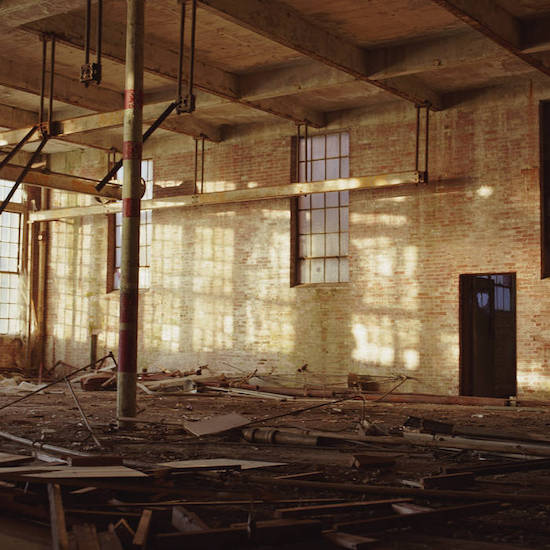“Now, from time to time, there unexpectedly rises within me, like a bursting bubble: the realization that she no longer exists, she no longer exists, totally and forever. This is a flat condition, utterly unadjectival – dizzying because meaningless (without any possible interpretation).” (Roland Barthes, Mourning Diary)
The death of a loved one is a seismic event, creating a monumental rift in our life. Still, it remains veiled in mystique, edited out in our hyper exteriorised culture, chemically managed and hushed, diminishing the reality of bereavement and its dark gifts. In grief, we become the unwilling citizens of a surreal dreamscape land, occupying the physical space of others while feeling expelled from the continuity of life and its effortless momentum. Later, a sharpened new awareness emerges, like a new sense, a “strange new acuity” as Barthes calls it in his Mourning Diary. He perceives people in the street under the aspect of ineluctably having to die, without them knowing this to be so. The physical and symbolic parts of us running parallel in comfortable denial of each other, that is the state of the modern self. Grief is like a rite of passage forcing both parts to confront and integrate, irreversibly altering your perception and forcing you to re-imagine life from a larger perspective.
Despite being heavily informed with the loss of her mother to cancer in 2018, Katie Gately’s second album Loom is not so much about grief, as made with grief. It is layered in every atom of the record, like a fifth element tying it all together. Part self-soothing machine, part banishing ritual, Loom is Gately’s most artistically refined offering. In its grim landscape amid the terrors of grieving, ailing, raging bodies and ravaging hyper anxious brain chemistry, an eerie transcendence looms large.
Loom took shape around the centrepiece ‘Bracer’, her late mom’s favourite, ten-minute long epic ride through the emotional rollercoaster of discontinuously shaped, anxiety-propelled build-ups to get lost in, knowing that in every terror there lies an antidote. Her mother’s favourite artist, Leonard Cohen, is eerily influential to set the mood, with his ‘Take This Waltz’ inspiring her disorientated, but profoundly focused ‘Waltz’, drunk on sadness.
The presence of found sound elements in Gately’s dark and moody sound designs, each one heavily processed and poignantly personal (earthquakes, coffins closing, pill bottles shaking, shovel digging), are like the remains of a former life disintegrating into the sonic soil in some macabre musical chemistry, only to be transformed by the power of some frenzied creative will into a monstrously life-affirming sound.
One of Gately’s greatest assets is the eagerness to creatively confront the dark matter of the psyche, lovingly provoking it out of the shady corners and playfully expose it in full elemental force. Animating sonic mundanity, turning it on its head and extracting excitement from unlikely places is Gately’s speciality.
She crafts unique compositions for scoring the internal psychodrama, keeping ambition in her sound as ever delightfully larger than life. Sound design with an ambition of an opera, dark folk soul and macabre carnivalesque spirit, such rarely enthralling phenomenon in today’s electronic music. In scope, ambition and mood, Björk and some Sacred Bones artists come to mind, but Gately’s fierce depth and earthy theatrical power make for truly incomparable music. Campy blockbuster aesthetics of brutalist, inorganic chunks of heavily processed sound violently clash against the eerie neoclassical sensibility. Choral harmonies uplift her prominent, sweetly ominous vocal incantations to dramatic heights.
But the moments on Loom when the wholesome racket quiets go to the very broken heart of the matter. On silent triptych, ‘Ritual’, ‘Rite’ and ‘Rest’, something vacant creeps in, the diminishing power of grief, eerily comforting and sinister, threatening to turn you into an afterthought of your former self, capable of blowing out the menacing orchestra of noise like a kid’s balloon.
As a kind of musical empath of noises par excellence, Gately’s superpower is radical anthropomorphism. Like in a fever dream of total subjective intensity and emotional ownership, she becomes all that happens around her. In a brilliant switch of perspectives, she assumes various narrative angles, as to uncover subconscious meaning, stepping into the role of the medicine (‘Tower’), cancer as the villain (‘Allay’), the perspective of her mother (‘Flow’).
In her essay On Being Ill, Virginia Woolf famously wondered why there is no record of the daily drama of the body along the big themes of literature, saying that, “love must be deposed in favour of a temperature of 104, jealousy give place to the pangs of sciatica; sleeplessness play the part of villain, and the hero becomes a white liquid with a sweet taste … one of whose names is Chloral.”
That music in 2020 still needs such a challenging torchbearer as Gately, is testified by the countless label rejections of the ‘nobody wants to listen to dark music’ kind, before she finally released the record on Houndstooth.
Loom is a brave and raw document from the frontlines of grief, exhibiting the full range of its manifestations beyond sadness – its vacancy, rage and disorientation, delivered with a sweet disposition, enchanting you into a greater and richer awareness of what lies beneath, revealing deep beauty in the collision of exhilarating creativity and inevitable doom.


